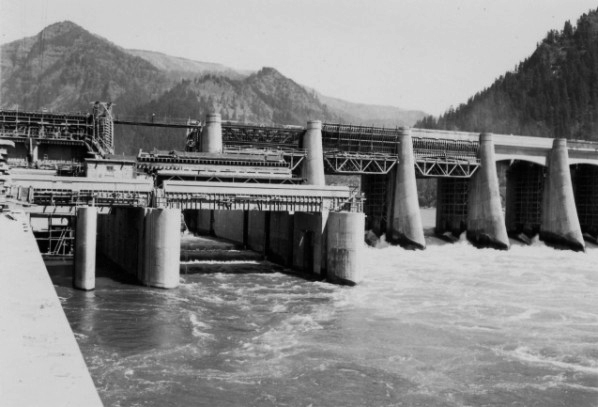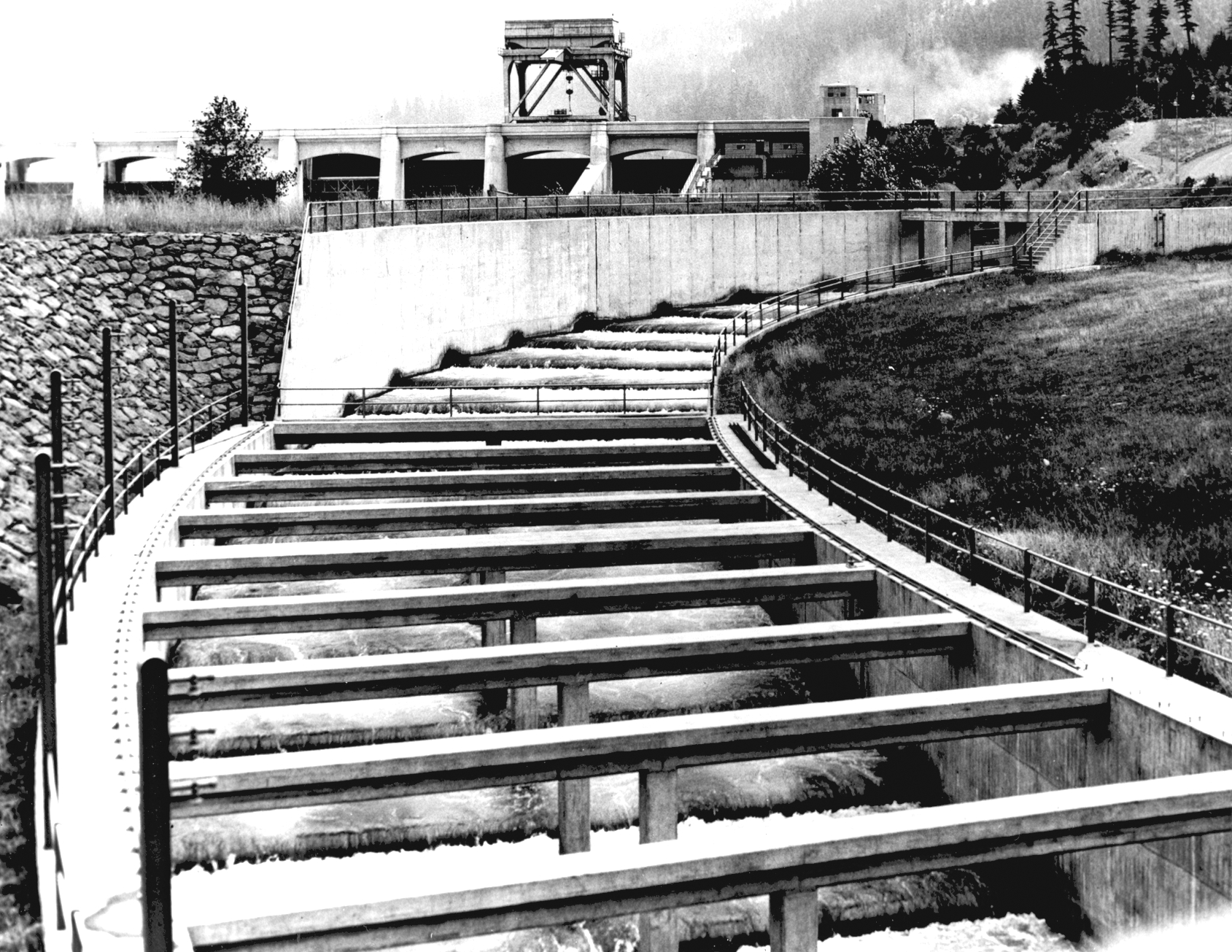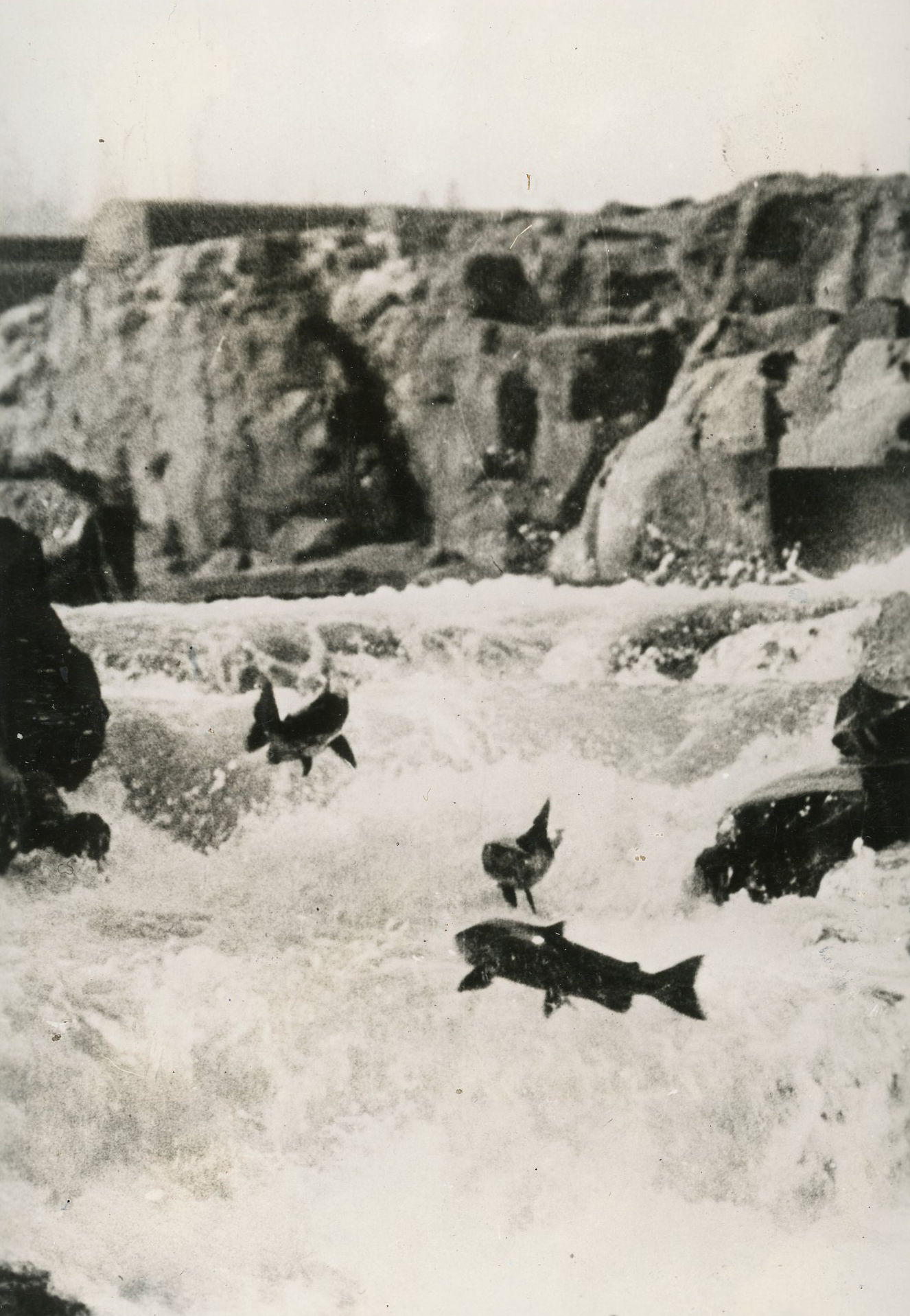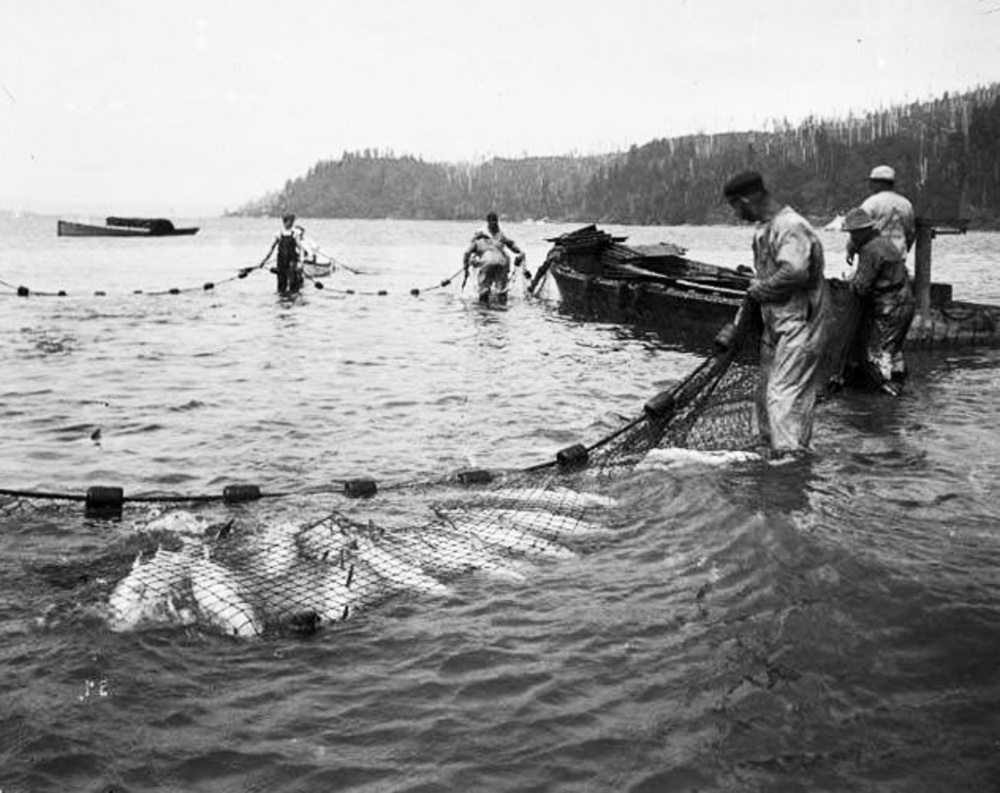Congress passed the Mitchell Act (Public Law 75-502) in 1938, named for Hugh C. Mitchell, director of Fish Culture for the State of Oregon during the 1930s. The act was a response to the serious decline of salmon and steelhead runs on the Columbia River, the result of irrigation diversions, water pollution, logging, and dams. The initial appropriation of $500,000 for surveys and habitat improvements was equal to the payments the federal government received from commercial fishers to use seine nets to fish near Sand Island and Peacock Spit in the Columbia River estuary between 1905 and 1931. In essence, it was a reinvestment of user fees to rebuild and conserve the affected runs.
The Mitchell Act was amended in 1946 to remove funding limitations and to authorize federal agencies to use state fish and wildlife agencies in Oregon, Washington, and Idaho for conservation work, which included habitat improvements and the construction and operation of fish hatcheries and screens on irrigation withdrawals. In November 1948, the U.S. Army Corps of Engineers issued a report proposing to use $20 million in Mitchell Act funding to build fish ladders, irrigation screens, and fish hatcheries—primarily hatcheries downstream of Bonneville Dam—to address the effects on salmon and steelhead that occurred farther upstream, including extirpation of the runs that originated above Grand Coulee Dam, which has no fish passage. Thus, according to the report, impacts upstream would be addressed by "developing the salmon runs in the lower tributaries to the highest level of productivity." This was a fundamental change in the purpose of the Act, from improving habitat and fish runs upstream of Bonneville Dam to building replacement runs downstream of the dam.
This work was accomplished through the Lower Columbia River Fishery Development Program. Through the program, for the first time federal money flowed to the states for specific fish-conservation work. In 1956, Congress expanded the program to areas above McNary Dam, upstream from Irrigon. Idaho joined the program the following year, and the word "Lower" was dropped from its name.
Of the 177 hatchery programs in the Columbia River Basin, 62 (35 percent) are funded wholly or in part by the Mitchell Act. These programs are carried out at 21 hatcheries, and together they release 63 million fish annually— roughly 45 percent of all hatchery salmon and steelhead produced in the Columbia River Basin. Historically, Mitchell Act annual production levels have been as high as 129 million juvenile fish, but the production was reduced substantially as the result of inflation, budget reductions, increasing maintenance costs, and other costs. These production facilities are operated by the Oregon, Washington, and Idaho fish and wildlife departments, the Confederated Tribes and Bands of the Yakama Nation, and the U.S. Fish and Wildlife Service.
Annual federal funding for the hatcheries varies but has been in the range of $12 million to $22 million in recent years. Funds are distributed to treaty tribes, states, and federal agencies from the National Oceanic and Atmospheric Administration Fisheries. The funding also pays for marking hatchery fish—to distinguish them from fish that spawn in the wild—for scientific research, hatchery reforms, and monitoring fisheries and fish production. It also pays for more than 700 fish screens and 90 fishways to protect migrating fish along more than 2,000 miles of stream habitat in the three states. Mitchell Act fish contribute significantly to commercial salmon harvests off the Oregon and Washington coasts.
-
![Bonneville Dam fish ladder]()
Bonneville Dam fish ladder.
Bonneville Dam fish ladder Courtesy Oreg. Hist. Soc. Research Lib., cn010651
-
![Temporary fish ladder at the Bonneville Dam on the Washington side, July 1937.]()
Bonneville Dam, temp fish ladder, Jul 1937.
Temporary fish ladder at the Bonneville Dam on the Washington side, July 1937. Oreg. State Univ. Archives, Pac. NW Stream Survey Collec., 1-E-1:12
-
![Fish ladders at Bonneville Dam.]()
Bonneville Dam, fish ladder at, CN 010651.
Fish ladders at Bonneville Dam. Oreg. Hist. Soc. Research Libr., CN 010651
Related Entries
-
![Bonneville Dam]()
Bonneville Dam
The U.S. Army Corps of Engineers built and operated Bonneville Lock and…
-
![Columbia River]()
Columbia River
The River For more than ten millennia, the Columbia River has been the…
-
![Salmon]()
Salmon
The word “salmon” originally referred to Atlantic salmon (Salmo salar),…
-
![Seine Fishing]()
Seine Fishing
For much of their fishing history in Oregon, Native Americans used hand…
Related Historical Records
Map This on the Oregon History WayFinder
The Oregon History Wayfinder is an interactive map that identifies significant places, people, and events in Oregon history.
Further Reading
Cone, Joseph, and Sandy Ridlington. The Northwest Salmon Crisis: A Documentary History. Corvallis: Oregon State University Press, 1996.
Taylor, Joseph E. Making Salmon: An Environmental History of the Northwest Fisheries Crisis. Seattle: University of Washington Press, 1999.
Final Environmental Impact Statement to Inform Columbia River Basin Hatchery Operations and the Funding of Mitchell Act Hatchery Programs, National Marine Fisheries Service, Seattle, 2014.







